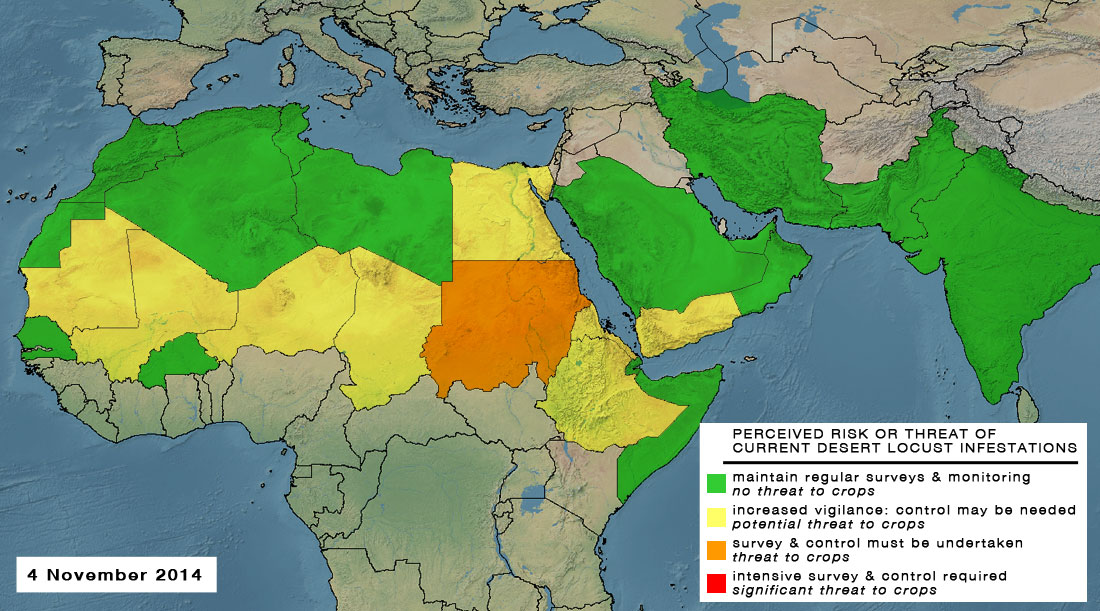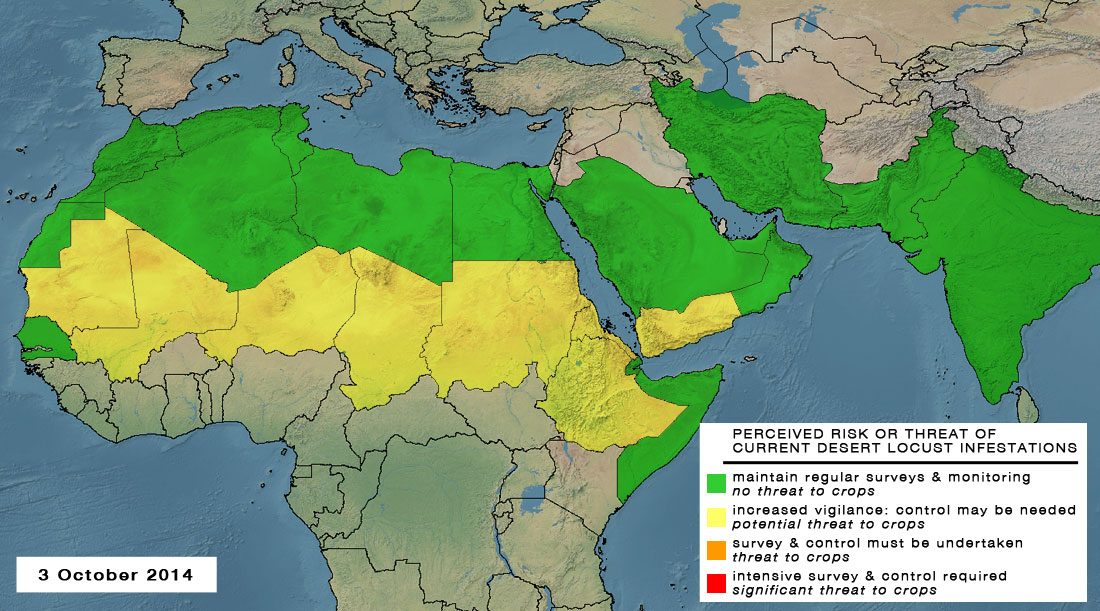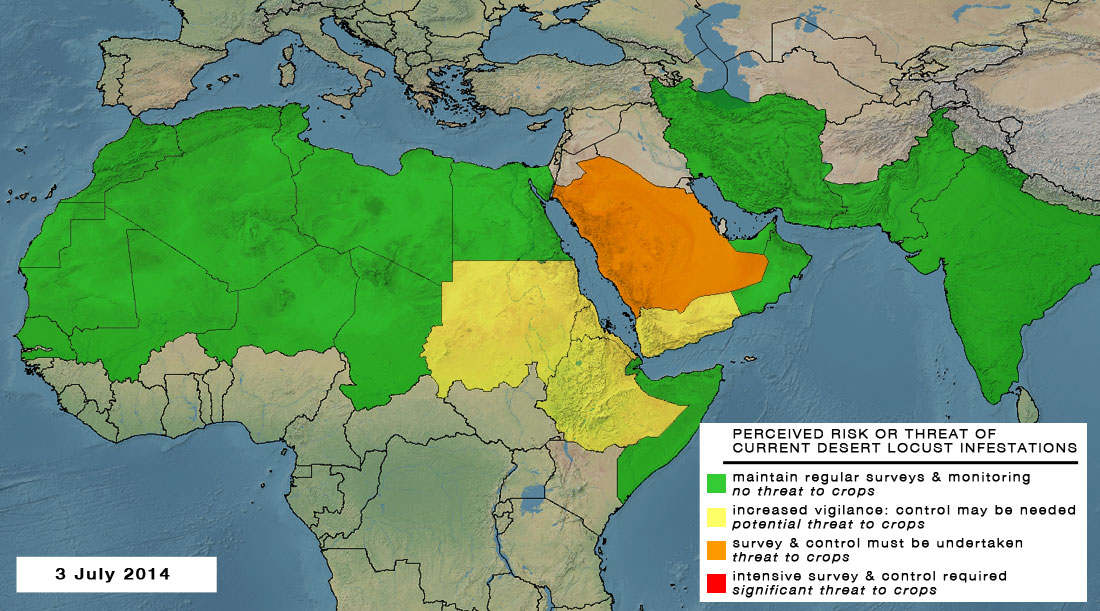3 December. Desert Locust threat in Sudan and Eritrea
The development of hopper bands and swarms on the Red Sea coast in Sudan and Eritrea pose a threat to crops in both countries.

4 November. Desert Locust outbreak increases risk in Sudan
As an outbreak developed in the interior of Sudan, there is increased risk of adult groups and swarms reaching the winter breeding areas along the Red Sea coast in Sudan and Egypt where breeding will cause locust numbers to increase.

3 October. Increased vigilance in N Sahel
As there may be more locusts present than seen during current surveys, there is a potential risk that they will concentrate and form groups as vegetation dries out in the summer breeding areas of the northern Sahel between Mauritania and Eritrea. Strict vigilance is required.

2 September. Locust threat continues to decline in the Central Region
The potential threat of Desert Locust to the Central Region continued to decline but vigilance should continue in Ethiopia and Yemen where there were reports of swarms in August.

1 August. Locust threat declines in the Central Region
Due to control operations and drying conditions, locust infestations have declined in the spring breeding areas. Nevertheless, vigilance should be maintained in Saudi Arabia, Yemen, Ethiopia and Sudan.

3 July. Locust threat remains in Saudi Arabia
Breeding has nearly ended in Saudi Arabia but hopper bands and swarms may form. Caution levels are in effect for Yemen, Ethiopia, Eritrea and Sudan that may be affected by a few small swarms.

5 May. Locust threat shifts to spring breeding areas
Control operations are required to reduce the threat to crops in eastern Ethiopia, the interior of Saudi Arabia and, to a lesser extent, in northern Oman and southeast Iran.

3 February. Serious situation along the Red Sea coast and Horn of Africa
There is an increased risk to countries along the Red Sea and the Horn of Africa due to breeding and swarm movement from northwest Somalia.





